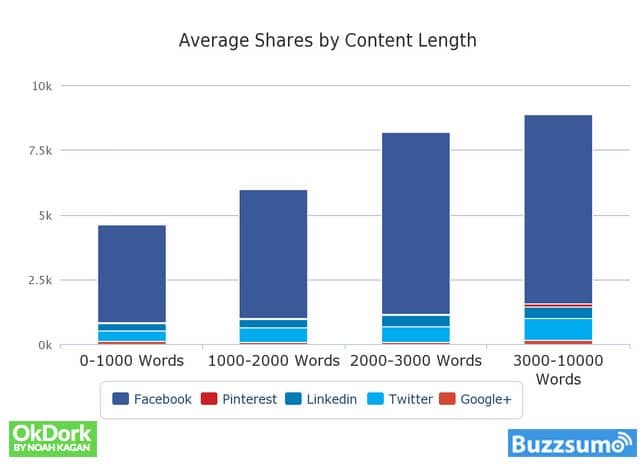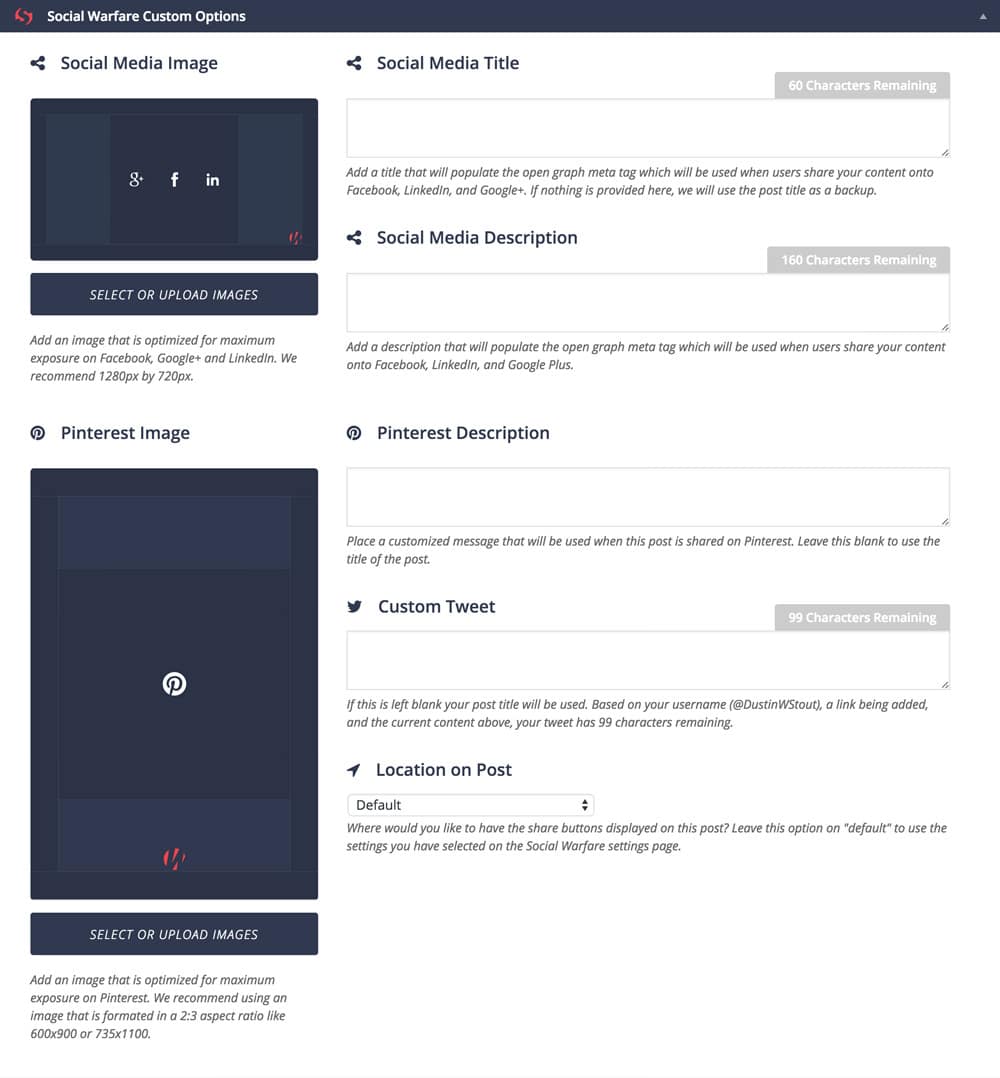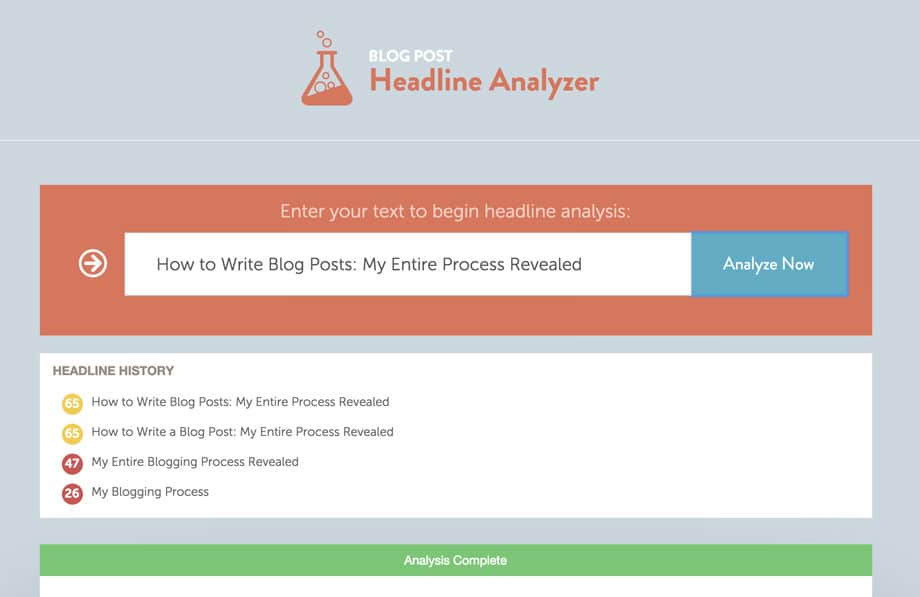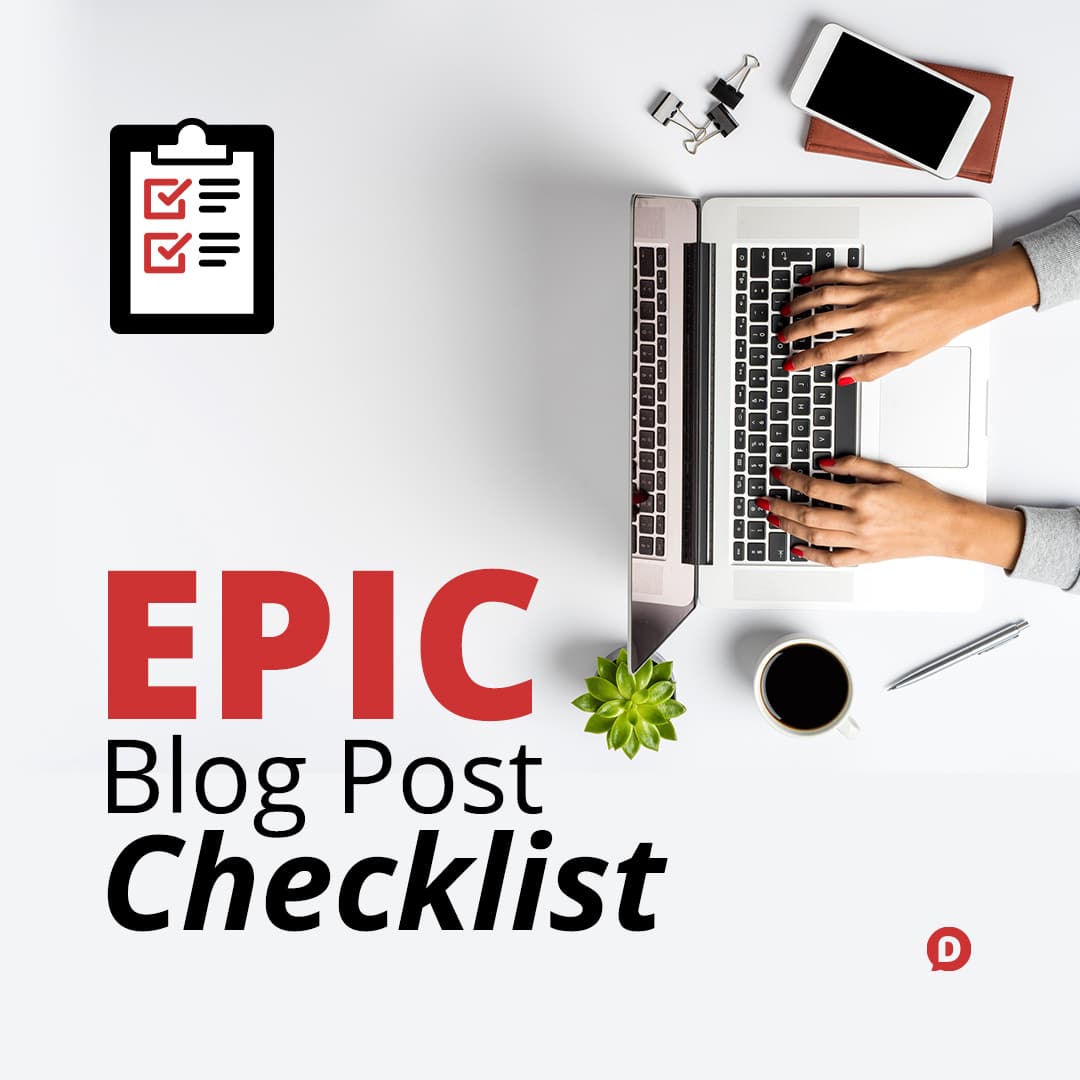There are so many things to remember when trying to write a successful blog post. Don’t you wish there was a simple blog post checklist to help you make sure you don’t leave anything out?
Well, my friends, I’ve created this article just for you.
In case you didn’t know this about me, I am a massive advocate of blogging. Why? Because I think it can be absolutely life-changing if taken seriously.
Now, I’m not talking about blogging about random daily events in our lives (which is actually how blogging started). What I’m talking about is using a blog as a marketing tool to build your brand.
I see a lot of bloggers out there who could be leveraging their blog so much better than they currently are.
And the only reason I know this is because I have worked for years, banging my head against a wall trying to figure out why my blog wasn’t taking off.
It turns out that just like a great recipe, a great blog post needs the right ingredients to be truly remarkable.

So I’m writing this for you–the blogger who knows they want to create amazing content but just needs help learning the recipe.
Ok, Dustin, I’m ready for the checklist. Where do I start?
Hold your horses!
Before you do anything, please remember that this checklist is for those who understand why blogging is a powerful marketing tool.
You need immense discipline to make sure that your content is interesting, engaging, and of the highest quality.
You will be putting a lot of effort in order for this to work. But trust me, the results will speak for themselves!
By the way, if you haven’t read it yet, I actually published a guide on how to write a blog post. It’s my documentation of the process I go through every time I publish something, and this checklist I’m giving you here is the same one I use.
Ok, on to the checklist!
1. Two-Thousand Word Minimum
Does your blog post have a minimum of 2,000 words?
Look, I wish we still lived in the days where 300-500 word blog posts were a thing that worked. But they just don’t anymore.
With the sheer volume of content being produced these days (and it is staggering how much is being produced), short and sweet articles just aren’t cutting it anymore.
Don’t believe me? There are three reasons why your blog posts need to be at least 2,000 words long. And two of these reasons have enough data behind them that I almost don’t need a third.
Search engines love long-form content
Think about this for a second– What is Google’s job?
Is it to give people the answer they’re looking for?
No.
Is it to find people the best websites?
No.
Google’s job is to find the best answer for someone’s question (or query).
And how does Google differentiate between the first best and the tenth best answer?
Well, that’s a question that only Google’s magical engineers could definitively answer.
But, thankfully there have been plenty of people who have done extensive, data-driven research on the topic. My favorite is by Brian Dean of Backlinko where he analyzed over one-million Google Search results. Here’s what he found:
“…the average word count of a Google first page result is 1,890 words.”
When I tell people they need to be writing 2,000-word articles they often reply with something like,
“But people don’t read all of that. Nobody likes long articles.”
My response to them is, yes, you’re right. Most people don’t like long articles. But Google does. And Google sends me more traffic than most people do.
Longer articles mean you have more opportunity to answer a person’s questions in high detail. It also means you have lots of room to add the right keywords and keyword variants to give your article all the ammunition it needs to blow Google’s digital socks off.
Longer articles get more shares
Here’s another one that’s a bit of a mind-boggler.
Yes, we live in an age where attention span is at its lowest. But the data shows that longer content tends to get more shares.
This study from Noah Kagan and Buzzsumo leaves no room for doubt:

But why, though?
My guess is that it has something to do with the fact that people want to share things that make them look good–things that make them look smart. And guess what–long articles seem smarter than short ones.
I know you wanna be all Seth Godin and write quick words of wisdom that drop people’s jaws in 10 seconds flat. But until you’ve got Seth Godin’s celebrity status, shoot for long-form, in-depth articles that are 2,000 words or more.
People may not read the entire thing. They may skim right through it only reading your headings. But they’ll see how in-depth the article is, and be compelled to share it.
Longer articles tend to be more evergreen
An evergreen article is a piece that can withstand the test of time. It will be as relevant two years from now as it is today.
In a blog post, I’ve written about the benefits of writing evergreen content, I mentioned that I raised my traffic by 41% with just 5 blog posts.
It may be more work up front, but it means less work in the long run.
2. Three Internal Links
Do you have at least three internal links on your blog post?
An epic blog post must link to other epic blog posts on your site.
In SEO speak, internal linking is one of the best things you can do to leverage your blog. By doing this, it is believed that the higher ranking page will “share” a bit of its authority with the other page, giving it a slight boost.
Linking to your other posts can also prolong your audience’s stay on your website. Keeping them on your site longer can build greater trust and increase their likelihood of recommending your or converting into a subscriber.
And session time is also one of the more important things that search engines look for when it ranks websites.
A longer session time indicates that the reader is getting value, and if they’re getting value, that means Google did its job in sending them there. That’s a win-win.
3. Three External Links
Do you have at least three external links on your blog post?
Epic blog posts must reference other authoritative content from other websites.
Search engines like it when sites link to other websites. It helps them determine how to better rank those linked pages. And they put more value to those who do it in a natural manner.
Whenever you link to other websites, you give search engines the idea that you are contributing to the circulation of websites all around the world.
But if you’re doing it in a legitimate way, you’re also adding value to the user experience because those links should be giving additional context to things you don’t necessarily cover in your article.
Be careful though to avoid linking to external pages that have the same target keyword as you. This may signal to search engines that the article you’re linking to is more authoritative, and therefore ranks higher, than your article.
4. Two Tweetable Quotes
Do you have at least two click-to-tweets on your post for better sharing purposes?
And when they see something useful, witty, funny, or interesting they want to share it with their followers.
That’s where this tool comes in.
Click-to-tweets are one of the best things you can add to your posts in order to make it more shareable.
By utilizing this tool, your audience can easily share a quotable part from your article with just a couple of clicks.
The easiest way to add these tweetable quotes (or Click-to-tweet quotes) to your website is to use a plugin like the Share on Twitter Block. It makes it super easy to add these Click-to-tweet quotes within y our blog post.
5.Five Images, One GIF

Do you have at least five SEO-optimized images and a gif?
Images break up your blog post so that it’s not just one giant wall of text.
Images help to convey ideas in a manner that is more engaging to those readers who may be more visual.
Also, images can be further optimized for SEO purposes.
However, reducing file size for better loading times, proper alt tags and title tags must be done in order to fully enjoy the benefits of having an image in your post.
More information can be found in my guide on how to create optimized images.

GIFs are those moving images that are super trendy on social media. And, personally, I love me a good GIF. They just allow you to communicate so much more than a static image.
GIFs are fun, interesting, and are highly shareable on social media, and therefore they are a big win for your article’s sharability.
6.Pinterest-Optimized Image
Do you have at least one “hidden” Pinterest-optimized image on your site?
Pinterest is a social bookmarking site that can help your blog massively increase its exposure and traffic.
But the key is to properly optimize your blog post for maximum pinnability.
If you are not doing this properly or if you are not doing it at all, then you are definitely missing out on a lot of potential traffic.
If you want to know the in-depth details, read my Pinterest Guide for Bloggers.
The short version is this: Create a tall image (735px wide by 1102px tall) for every single blog post that people can save to Pinterest.

Wait, Dustin. I am using Pinterest and am putting Pinterest optimized images in my post. But my audience doesn’t seem to pin it. What gives?
That is where Social Warfare, the plugin I told you about in point 4, comes in again!
One other feature that the plugin can do for your soon-to-be epic blog posts is to make sure your readers are pinning the right image.
When they click on the “Pin” button, instead of getting an option to pin any image on the page, they get the one Pinterest Optimized Image that you’ve chosen for them to pin.
And it also lets you write the description for them, giving your readers even less work to do when sharing your articles.
On top of that, Social Warfare makes it so you can actually hide the tall image from the page if you want. Because let’s face it, giant images just don’t look great in a blog post.
You can create images that are Pinterest-worthy dimensions and just add it to the Social Warfare Custom Options in your blog post.

Pretty easy, right?
7. Headline Score = Green
Are you sure that your headlines are grabbing your reader’s attention?
An epic blog post needs an epic headline. That much is a no-brainer.
Headlines are super important since they make sure that you send out a strong message to your audience about your post using the first words they will ever read on it.
And I do this by using CoSchedule.
CoSchedule has a tool called Headline Analyzer that scores your headline according to how attention-grabbing it is.

You can use their free Headline Analyzer or if you are a CoSchedule user, it’s built right into their WordPress integration.
Just type in your headline and it will pop out a score. Keep working at it using their suggestions until you get a score that is “green”.
Success at blogging starts on your headline, and CoSchedule can be a powerful tool that can decide a make or break point in your article.
8. Content Upgrade
Do you have a Content Upgrade on your post?
Ah, Content Upgrades. Did you know that by utilizing this, I was able to grow my subscriber rate to over 4,000 per month?
Yes! And you can definitely do it too!
Content Upgrades are basically a Lead Magnet that is specific to the post you are doing. You put a Call-to-Action on your post saying that your reader can learn more or get fantastic bonuses related to the topic of your article by subscribing to your site.
You can then reward those who subscribed right then and there with something they can only get if they used that specific Content Upgrade.
An example of this can be seen in my article The Ultimate Guide to Branding Yourself on Social Media. I included a downloadable quick-reference checklist for things I discussed there.
A lot of experts already know the power of this. They are utilizing this tactic for their clients and their own businesses, growing their subscriber list like crazy.
9. Internal Backlinking
Once your blog is published, are you looking at other possible link opportunities using old blog posts?
Remember point 2?
Well, it still applies even after you have published your post.
Go back to your old blog posts and relevant links to your new article.
This ensures that those articles are:
- Transferring any accumulated SEO authority to the new article
- Making sure that readers who find those old posts have the opportunity to find newer, related blog posts
It might take you 5-10 minutes at first, but once you make this a habit, you’ll get better and faster because your brain will more easily remember key articles that are great link opportunities.
10. Promote On Social Media
Have you promoted your blog post on all possible social media channels?
After publishing your masterpiece of a blog post, it won’t make it big by itself immediately. You need to do the first move to make it epic.
And that is where social media networks come in.
Social media is an extremely powerful tool in getting your content discovered. It has been the single most important way I’ve found my audience to date.
But you don’t just want to paste the title of your article and tell people to “check it out.”
That won’t work. People are bombarded by headlines all day and are completely blind to the words “check this out”nowadays.
You also don’t want to just share it out once, right after you hit “Publish” and be done with it.
That won’t be very effective. People are on social media at different times throughout the day, and you never know what percentage of your audience will see that one social post at that exact time you share it.
Instead, create several interesting social media messages to promote your new article, and do it over the course of at least 30 days.
Whoa, Dustin! Who in their right mind has that kind of time?!
Oh, trust me… I know.
And that’s why I’ve even created a template for you to help you create a month’s worth of social media messages in 5min or less.
That template will help you create lots of different social media posts to promote your article over the course of 30-days using one of the social media management tools of your choice.
11. Niche Community Promotion

Are you promoting your blog post in other niche outlets, such as Tailwind?
There are other ways to leverage your online community to get your content noticed.
One such example is one I use regularly– Tailwind Tribes.
Tailwind is a social media app that lets you schedule Pinterest Pins and Instagram Posts. But they’ve also created a feature they call Tribes which allows you to join groups of other users with similar interests who want to help each-other share great content.
Let’s say you are in the digital marketing industry. You can find numerous Tribes to join and share your article to, and the idea is that all the other members will share your article to their Pinterest accounts.
It lets your blog post reach highly-targeted audiences which are most likely to share your post if they see value in it.
I have been using Tailwind Tribes for a while now, and so far it has given me great results in terms of content promotion!
Some other niche community examples would be things like:
- Online forums about your key topics
- Slack Communities for bloggers
- Facebook Groups
- In-person meetups or masterminds (yes, niche communities don’t just have to be online)
You get the idea, right?
Of course you do, you’re a smarty.
And we’re done!
If you check off every item on this list, you will undoubtedly have an epic blog post you can be proud of.
As a quick recap, here’s a quick rundown of the checklist we’ve tackled so far:
- Minimum of 2,000 Words
- At least three internal links
- At least three external links
- At least two click-to-tweets
- A minimum of five SEO-optimized images and one GIF
- At least one “hideable” Pinterest optimized image
- A green-lit headline score on Headline Analyzer by CoSchedule
- A Content Upgrade
- Internal linked to older blog posts
- Promoted on all social media channels
- Promoted in niche outlets like Tailwind Tribes
And there you go!
As an added bonus, I’ve created a printable version of this checklist to help you remember every time you’re about to publish a new post.
Just add your email below to join our Insiders List, and I’ll send you the download link right away! You’ll also get my best social media news, insights, and projects I’m working on sent regularly. You can unsubscribe any time.

Download the Epic Blog Post Checklist
Once you confirm that you are a real person the download link will be sent straight to your inbox!On, and just in case you’re into infographics, I created one that you can add to your favorite blogging-related Pinterest board, or wherever else you keep infographics:

You can embed this infographic on your own website by copying and pasting the code below:
<a href="https://dustinstout.com/blog-post-checklist/" target="_blank"><img src="https://dustinstout.com/wp-content/uploads/2018/09/blog-post-checklist-infographic.jpg" alt="An Epic Blog Post Every Time with This Simple Checklist" /></a><p>[Infographic courtesy of <a href="https://dustinstout.com">Dustn.tv</a>]</p>
As long as you remember the things on this checklist and discipline yourself into doing this constantly, then you can create an epic blog post every single time.

Leave a Reply
You must be logged in to post a comment.